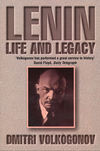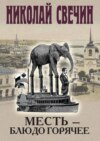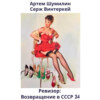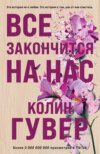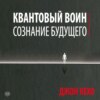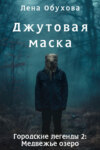Читать книгу: «Lenin: A biography», страница 2
Soviet biographies of Lenin are countless and uniformly eulogistic, singing the praises of his genius, his perfection and his greatness. Within a year of the Bolshevik seizure of power, Grigory Zinoviev virtually mapped out the first official biography and set the tone that would become almost statutory, in a speech in which he employed such terms as ‘the apostle of Communism’ and ‘Leader, by the grace of God’.12 The published memoirs of Lenin’s wife, Nadezhda Krupskaya, who knew him better than anyone, were different, though they too bear the stamp of the era, ‘the midnight of the epoch’. The exception to the rule is perhaps her memoirs about the last period of his life which, like those of his sister, Maria, were never published.
The five editions of Lenin’s collected works vary substantially. The first came out between 1920 and 1926 and numbered twenty volumes. The second and third (which differed only in the quality of their bindings) were published in thirty volumes between 1930 and 1932. The fourth, known as the Stalin Edition and the one translated into foreign languages, including English, came out between 1941 and 1957 in thirty-five volumes. The fifth, described as the Complete Edition and the one to which we refer most often in this book, was published between 1958 and 1965 and benefited to some extent from the somewhat liberal climate of Khrushchev’s early years. It ran to fifty-five volumes, while the sixth, which was in preparation when the August 1991 events occurred, was planned to have at least seventy. Lenin is inexhaustible. The most serious Soviet work on him is a twelve-volume ‘Biographical Chronicle’ which provides not merely the basic contours of the man-god’s life, but also thousands of names and facts. It also contains many cuts, silences and distorted interpretations. The biographies written in the West are immeasurably more useful, although they lack the original source material, especially on the Soviet period.
One of the most interesting published accounts of Lenin was written by Trotsky when Lenin died in 1924.13 It formed part of the material he collected for many years for a ‘big book’ on Lenin. In April 1929, exiled in Constantinople, he wrote to Alexandra Ramm, his translator in Berlin: ‘My book Lenin and His Successors cannot appear earlier than two or three months after my autobiography has come out.’ And three months later he wrote that he was writing another book on ‘Lenin (a biography, personal portrait, memoirs and correspondence)’.14 Five years later Trotsky wrote to his supporter, M. Parizhanin: ‘My work on Lenin has not yet and will not soon move beyond the preparatory stage. I won’t be able to send the first chapters for translation before July.’15 Lenin dead was no less useful to Trotsky, for personal reasons, than he was to Stalin. Both of them knew more about their patron than anyone else, but the ‘big book on Lenin’, alas, was never completed or published.
Trotsky first met Lenin in 1902, and their relationship went from mutual admiration to deep mutual rejection and back to close alliance. Trotsky could have recalled that, at the time of the 1905 revolution, Lenin in a fit of frustration had called him a balalaika, a poseur, base careerist, rogue, scoundrel, liar, crook, swine, and more. That was Lenin’s style, but it did not prevent him from writing in 1917, ‘Bravo, Comrade Trotsky!’ or from calling him ‘the best Bolshevik’. Trotsky, for his own part, was never short of an insulting epithet to throw back.
Stalin also knew a lot about Lenin, notably from the Soviet rather than the émigré period. The archives show that Stalin received no fewer than 150 personal notes, cables, letters and orders from Lenin. But many of them are fragments of telegram tape, second copies of typescript and other indirect evidence. I have alluded in my book on Stalin to the dubious authenticity of such materials. After becoming supreme dictator, and with the help of his yes-men, Stalin introduced some significant falsifications into the correspondence with Lenin, which had grown rapidly with his appointment to the post of General Secretary of the Communist Party in 1922. After his own authorized biography had appeared, it seems Stalin also planned to bring out a book on Lenin, though he never did.16
Perhaps it was another leading Bolshevik, Lev Kamenev, who received the most correspondence, 350 letters and memoranda by my reckoning, most of them still unpublished. He was much trusted by Lenin, even on personal matters, for example on Lenin’s relationship with his mistress Inessa Armand at the time he and Lenin were sharing an apartment in Poland. Kamenev’s knowledge of Lenin is important because he was the first editor, with Lenin’s direct participation, of Lenin’s collected works (1920–26). Kamenev, however, wrote little, and left nothing to compare in size with the heritage of his constant friend Zinoviev.
Grigory Yevseyevich Zinoviev and his wife Z.I. Lilina were close family friends of Lenin, and Zinoviev probably received more personal letters from Lenin than any other leader. The new Communist top brass were not modest: once in power, they took up residence in the Kremlin, expropriated palaces and estates, gave cities their names, erected monuments to themselves, surrounded themselves with bodyguards and doctors, and quickly set about publishing their collected works. Zinoviev’s best work on Lenin was possibly his introduction to the study of Leninism, in which he exhorted his readers to ‘study Lenin at first-hand! To know Lenin is to know the road to the victory of the world revolution.’17 In the early 1930s, when Zinoviev’s days were numbered, he wrote several chapters of a book on Lenin, hoping it would save him. Stalin would not so much as look at what his prisoner had written, for he had long ago decided the fate of Zinoviev, and Kamenev too.
Most of Lenin’s biographers have understandably concentrated on his social and political rôle, but it is also important to balance that against his strictly human, moral and intellectual qualities, and to do so without forgetting the historical context. The historical Lenin was a child of his time: troubled, cruel, expectant, alarming. History neither accuses nor justifies, it is a means to understand, to discern the patterns that characterize a distant age. We say the word ‘Lenin’ and we see in our mind’s eye a man whose high forehead and large bald patch suggest the embodiment of intellect – as well as the commonplace.
Gleb Krzhizhanovsky, an early associate of Lenin’s who held high office in the Soviet government, made an attempt in his book Velikii Lenin to define the essence of Lenin’s genius (to which the book was dedicated), but was more successful in describing his subject’s exterior appearance. It was, he wrote, simple and modest: ‘Short of stature and wearing his usual cloth cap, he could easily have passed unnoticed in any factory district. All one could say of his appearance was that he had a pleasant, swarthy face with a touch of the Asiatic. In a rough country coat he could just as easily have passed in a crowd of Volga peasants.’ Clearly, this description was intended to stress the ‘folksiness’, the ‘depth’, the ‘link with the lower orders’, but Krzhizhanovsky also noticed an important element: Lenin’s eyes, the mirror of the human mind. Those eyes, he wrote, ‘were unusual, piercing, full of inner strength and energy, dark, dark brown …’18 It was a feature noticed by many, especially by the writer A.I. Kuprin in his graphic description, ‘Instant Photography’. Lenin, he wrote, ‘is short, broad-shouldered and lean. He looks neither repellent, militant nor deep-thinking. He has high cheekbones and slanting eyes … The dome of his forehead is broad and high, though not as exaggerated as it appears in foreshortened photographs … He has traces of hair on his temples, and his beard and moustache still show how much of a fiery redhead he was in his youth. His hands are large and ugly … I couldn’t stop looking at his eyes … they are narrow; besides which he tends to screw them up, no doubt a habit of concealing short sight, and this, and the rapid glances beneath his eyebrows, gives him an occasional squint and perhaps a look of cunning. But what surprised me most was their colour … Last summer in the Paris zoo, seeing the eyes of a lemur, I said to myself in amazement: at last I’ve found the colour of Lenin’s eyes! The only difference being that the lemur’s pupils were bigger and more restless, while Lenin’s were no more than pinpricks from which blue sparks seemed to fly.’19 The writer Ariadna Tyrkova, who had seen Lenin at close quarters more than once, drew a simpler picture: ‘Lenin was an evil man. And he had the evil eyes of a wolf.’20
A physical detail, while of no decisive significance to Lenin’s political portrait, may nevertheless highlight his main characteristic, namely his powerful mind, a mind that was too often not merely pragmatic, flexible and sophisticated, but also malevolent and perfidious. His radical pragmatism explains the actions he took to bring about the defeat of his own country in the First World War in order to get his party into power. His radicalism compelled him to accept the loss of entire national regions of the former tsarist empire, although when complete disintegration was threatened he cast aside his internationalism and started defending that empire, by then transformed into its Soviet form.
It was power, not love of fatherland, that prompted him to save Russia. He had, after all, shown his contempt – to put it mildly – for Russia and the Russians. Writing in the autumn of 1920 to Jan Berzin, a Central Committee member of Latvian origin, about publishing Communist propaganda, he complained that things were going badly. He advised Berzin to invite two Swiss comrades from Zurich, and to pay them ‘arch-generously’. He went on: ‘Hand out the work to Russian idiots: send the cuttings here, but not occasional issues (as these idiots have been doing until now).’21 Without a blush, he could call his fellow-countrymen idiots who could only be trusted to do the simplest tasks, while left-wingers from Zurich had to be paid ‘archgenerously’. This is only a short note, but a very eloquent one, and similar evidence of Lenin’s attitude to Russianness is abundant, though of course well hidden in the archives.
In the middle of 1922 the civil war was over and Russia lay in ruins. It seemed that at last the cruelty would end. Lenin pointed out that ‘although coercion is not our ideal’, the Bolsheviks could not live without it, even where ideas, views and the human spirit are concerned. He recommended the death penalty, commuted in mitigating circumstances to deprivation of liberty or deportation abroad, ‘for propaganda or agitation or belonging to or aiding organizations supporting that part of the international bourgeoisie that does not recognize the … Communist system’.22 This proposal was later incorporated into the infamous Article 58 of the Criminal Code, under which millions constructed and then filled the concentration camps. Lenin is the source of the totalitarian ideology of intolerance. By creating the Cheka, the punitive organ of the dictatorship and his favourite brainchild, Lenin influenced the outlook of the Communists who soon came to believe that the amoral was moral, if it was in the Party’s interest. S.I. Gusev, a member of the Party Central Control Commission, addressing the XIV Congress in December 1925, declared: ‘Lenin once taught us that every member of the Party must be an agent of the Cheka, that is, we must watch and inform … I believe every member of the Party should inform. If we suffer from anything, it is not from denunciation, but from non-denunciation. We might be the best of friends, but once we start to differ in politics, we must not only break off our friendships, we must go further and start informing.’23 Leninist doctrine had donned the police agent’s cloak.
It is often said that, as he felt death approaching, Lenin was horrified by what he had done and was willing to rethink much. It may be so, but it is impossible to prove. Even had he wanted to change things, which is doubtful, he took his intentions with him to the grave. It is also said that Lenin failed to build ‘true socialism’, even with the aid of the New Economic Policy. But if one looks closely at his understanding of this ‘new policy’, one can clearly discern old Bolshevik features. NEP, as far as Lenin was concerned, was bridled capitalism, and it could be ‘slapped down’ at any time. When reports started coming in about profiteering by traders, the so-called ‘Nepmen’, Lenin reacted quickly: ‘… we need a number of model trials with the harshest sentences. The Justice Commissariat obviously doesn’t understand that the New Economic Policy requires new methods of applying punishment of new harshness.’24
Lenin never concealed his belief that the new world could only be built with the aid of physical violence. In March 1922 he wrote to Kamenev: ‘It is the biggest mistake to think that NEP will put an end to the terror. We shall return to the terror, and to economic terror.’25 And indeed there was to be enough terror of every kind. After many decades we Russians condemned it, refusing for shame to answer the question of who had started it and who had made it into a sacred object of revolutionary method. I do not doubt that Lenin wanted earthly happiness for the people, at least for those he called ‘the proletariat’. But he regarded it as normal to build this ‘happiness’ on blood, coercion and the denial of freedom.
1 Distant Sources
Vladimir Ilyich Lenin did not appear fully fledged on the scene as the leader of the radical wing of Russian social democracy. At the end of the nineteenth century, when he was not quite thirty, he was merely one among many. Julius Martov, who collaborated closely with him in St Petersburg and Western Europe between 1895 and 1903, recalled that Lenin cut a rather different figure then from the one he was to present later on. There was less self-confidence, nor did he show the scorn and contempt which, in Martov’s view, would shape his particular kind of political leadership. But Martov also added significantly: ‘I never saw in him any sign of personal vanity.’1
Lenin himself was not responsible for the absurdly inflated cult that grew up around his name throughout the Soviet period, although he was not entirely blameless. When in August 1918, for instance, it was decided to erect a monument at the spot in Moscow where an attempt had recently been made on his life, he did not protest, and only a year after the Bolshevik seizure of power he was posing for sculptors. In 1922 monuments were raised to him in his home province of Simbirsk, in Zhitomir and Yaroslavl. He regarded all this as normal: in place of monuments to the tsars, let there be statues of the leaders of the revolution. His purpose was rather to affirm the Bolshevik idea than to glorify personalities. Everyone had to don ideological garb, the uniform of dehumanized personality, and Lenin and Leninism were the main components of the costume. The deification of the cult figure was the work of the system which he had created and by which he was more needed dead than alive.
Vladimir Ilyich Ulyanov began to use the alias and pseudonym ‘Lenin’, probably derived from the River Lena in Siberia, at an early stage. His very first writings, in 1893, appeared, unsigned, in mimeographed form. He first used a signature, ‘V.U.’, at the end of 1893, and then a year later he signed himself ‘K. Tulin’, a name derived from the town of Tula. In 1898 he used the pseudonym ‘Vl. Ilyin’ when reviewing a book on the world market by Parvus (Alexander Helphand), translated from German. In August 1900, in a private letter, he signed himself ‘Petrov’, a name he continued to use in correspondence with other Social Democrats until January 1901, when he signed a letter to Plekhanov with the alias ‘Lenin’. He seems not to have settled into this alias straight away, and still went on using ‘Petrov’ and ‘V.U.’, as well as his proper name, for some time. He also adopted the name ‘Frei’ for part of 1901, and in 1902 ‘Jacob Richter’ vied for a while with ‘Lenin’. But from June of that year, it appears he became comfortable at last with the name by which the world would one day come to know him.
It is difficult to imagine Lenin as young. We are familiar with the photograph of the chubby little boy and high school student with intelligent eyes, yet he seems to have stepped straight from his youth into mature adulthood. Alexander Potresov, another early collaborator, who knew him well at the age of twenty-five, recalled that ‘he was only young according to his identity papers. You would have said he couldn’t be less than forty or thirty-five. The faded skin, complete baldness, apart from a few hairs on his temples, the red beard, the sly, slightly shifty way he would watch you, the older man’s hoarse voice … It wasn’t surprising that he was known in the St Petersburg Union of Struggle as “the old man”.’2
It is worth noting that both Lenin and his father lost their considerable mental powers much earlier than might be thought normal. I am not suggesting a necessary connection, but it is true that both men died of brain disease, his father from a brain haemorrhage at the age of fifty-four, and Lenin from cerebral sclerosis at fifty-three. Lenin always looked much older than his years. His brain was in constant high gear, and he was usually having a ‘row’ with someone, ‘row’ being one of his favourite words. It may not be a sign of his genius, but the fact is that, even when he was relatively young, Lenin always looks like a tired old man. Be that as it may, let us look at his origins, his antecedents and his background.
Genealogy
Simbirsk, where Lenin was born on 22 April 1870, was the small leafy capital of the province of the same name. At the end of 1897 it had a population of 43,000 inhabitants, of whom 8.8 per cent were of gentry (or noble) status, 0.8 per cent clergy families, 3.2 per cent merchants, 57.2 per cent ordinary town-dwellers or lower middle-class, 11 per cent peasants, 17 per cent military and the remaining 2 per cent unclassified. It had two high schools, one each for boys and girls, a cadet school, a religious school and seminary, a trade school, a midwifery school, schools for the Chuvash and Tatar minorities, several parish schools, the Karamzin Library, and the Goncharov Public Library. It had a vodka distillery, a winery, a brewery, a candle factory and flour-mill. There were a number of charitable institutions. Founded on the high side of the middle Volga in 1648 as a defence against nomadic raids, the town was soon transformed into a typical, sleepy, unhurried provincial Russian town.
In time Simbirsk became a Bolshevik shrine, renamed Ulyanovsk. A local historian, Z. Mindubaev, has written that the transformation of the ancient town into a ‘grandiose Leninist altar’ was accompanied by a ‘huge pogrom’ which flattened everything. With astonishing mindlessness, the ‘builders’ tore down ancient churches, cathedrals and monasteries. Even the church where Lenin was baptized was razed, as was a house in which Pushkin had once stayed early in the nineteenth century. The cathedral which had been erected at about the same time in memory of the fallen of Simbirsk in the war of 1812 was cleared in the 1920s to make way for a monument to Lenin. Streets were renamed after Marx and Engels, Liebknecht, Rosa Luxemburg, Plekhanov and Bebel. At the height of the famine of 1921, when the Volga region was ravaged, the local authorities allocated funds for a statue of Marx. The cemetery of the Pokrovsky Monastery was bulldozed to make way for a cosy square, leaving only one grave – that of Lenin’s father, Ilya Nikolaevich Ulyanov, with its cross removed.3
The twelve-volume ‘Biographical Chronicle’ of Lenin’s life, while it attempts (with little success) to catalogue every fact and account for virtually every waking moment of his life, is extremely laconic about his birth and background: ‘April 10 (22 New Style4) 1870 Vladimir Ilyich Ulyanov (Lenin) was born. His father, Ilya Nikolaevich, was an inspector and later the director of the province’s schools. He came of poor town-dwellers of Astrakhan. His father had been a serf. Lenin’s mother, Maria Alexandrovna, was the daughter of a doctor, A.D. Blank. The Ulyanov family lived in Simbirsk (still called Ulyanovsk in late 1994), in a wing of Pribylovskaya’s house on Streletsky Street (now Ulyanov Street) No. 17a.’5 Other information about the family has to be gleaned in fragments from the twelve volumes, most of which consist of references to Lenin ‘making plans’, or ‘destroying his opponents intellectually’, reading, writing or making a speech. Consisting of several thousand pages, it is a chronicle that presents the portrait of a political robot, not a human being.
Similar information is to be found in the official biography of Lenin, compiled by a brigade of scholars under P.N. Pospelov. All eight editions of this work, beginning with the first in 1960, can be found in any Soviet library, but it is doubtful if any have ever been consulted voluntarily. The people may have resigned themselves to believing assurances that the Party was in the hands of ‘outstanding leaders of the Leninist type’, but they always retained the lingering suspicion that this idea was exaggerated. Most people were therefore rather indifferent to the official image of Lenin. Only a few individuals, perhaps while preparing for an exam or writing a dissertation, were actually required to pore over a volume of Lenin’s works. As for Party leaders themselves, the majority of those I have known never read a word of Lenin beyond the ‘Party minimum’.6 What was regarded as the proper Leninist text to read was laid down in directives and confidential letters from the Central Committee. They were all being led by a Lenin they did not know.
In order to establish Lenin’s genealogy, we have to resort to books published in the 1920s, as well as to foreign publications and a range of Russian archives. The large Ulyanov family had many branches. Lenin’s parents married in 1863 in Penza, capital of the province of that name to the west of the lower Volga, where Lenin’s father was working as a teacher of physics and mathematics. After a spell in Nizhni Novgorod, in the centre of European Russia, the family moved to Simbirsk. There is almost nothing in the official biographies about Lenin’s grandparents, especially their ethnic origin, not that this would tell us anything about his intellectual capacities, social position or moral qualities. But there has been a great reluctance to discuss the Ulyanov family tree, no doubt because it was felt that the leader of the Russian revolution must be a Russian.
The Russian Empire, however, was a crucible of the most varied national and racial ingredients, as was to be expected in so vast a territory. I dwell on this aspect of Lenin’s biography because his ethnic background was carefully covered up to make sure that he was seen to have been, if not of ‘proletarian’, at least of ‘poor peasant’ origin. But if the ‘Chronicle’ was able to show – as it does – that his father’s father had been a serf, why was it not possible to reveal the background of his father’s mother, and his mother’s parents?
Lenin’s mother, Maria Alexandrovna, was the fourth daughter of Alexander Dmitrievich Blank, a doctor and a baptized Jew from Zhitomir. He had taken as his patronymic the name of his godfather at his baptism, Dmitri Baranov, dropped his original patronymic of Moishevich, and adopted the Christian name of Alexander in place of his original first name, Srul, the Yiddish form of Israel. According to research done by David Shub and S.M. Ginsburg, Lenin’s grandfather was the son of Moishe Itskovich Blank, a Jewish merchant from Starokonstantinov in the province of Volynia, who was married to a Swedish woman called Anna Karlovna Ostedt.7 Shub asks how a Jew could have become a police doctor, and later the owner of an estate. Referring among other things to the archives of the Holy Synod, Shub concluded that conversion to Orthodox Christianity removed many barriers to a career in state service. ‘There were,’ he writes, ‘baptized Jews in the reign of Nicholas I who occupied far higher positions than police doctor … Many such Jews were ennobled and thus achieved all the rights and privileges of that class.’8
In St Petersburg, Alexander Blank married Anna Grigorievna Groschopf, the daughter of prosperous Germans. The Blanks were evidently well off, since they were able to make several trips to Europe, notably to take the waters in Karlsbad in the Czech part of Austria-Hungary. Alexander Blank worked in various towns and provincial capitals of the Russian interior, for the most part in the Volga region, as district physician, police doctor and hospital doctor, finally occupying the prestigious post of hospital medical inspector of the state arms factory in Zlatoust, in the province of Chelyabinsk, Western Siberia. In 1847, having attained the civil service rank of State Counsellor, he retired and registered himself as a member of the nobility of Kazan, a major city on the Volga and centre of Tatar culture in the region. There he bought the estate of Kokushkino.9 This had been made possible by the large dowry his wife had brought with her. Anna Grigorievna never learned to speak fluent Russian and never abandoned her Lutheran religion. In Kokushkino she would raise five daughters: Anna, Lyubov, Sofia, Maria (Lenin’s mother) and Yekaterina.
Kokushkino was not the ‘smallholding’ of the official biographies, but was rather a small landowner’s estate where, until 1861, Blank owned serfs. This normal feature of the time was something Soviet historians were never allowed to mention. It was a busy, well populated place, and Blank was evidently a strong-willed and rather impulsive man. He was obsessed with the idea that hydrotherapy was a panacea, and wrote a book on it, stating that ‘water inside and out’ could sustain everyone in good health. He used to make his tearful daughters wrap themselves in wet sheets for the night, with the result that they couldn’t wait to grow up and marry to escape their father’s crazy experiments.
Anna Groschopf died young, and after her death her sister, Yekaterina, came to Kokushkino to take on the job of raising the children. She was an educated woman, and it was from her that Lenin’s mother acquired her ability to play the piano, to sing and to speak German, English and French. A frequent visitor to Kokushkino was Karl Groschopf, Yekaterina’s brother and a senior official in the department of foreign trade. His visits would occasion musical evenings, and the Blank girls were much attracted to their educated and exuberant uncle. Life on the estate was very much that of a typical, moderately well-off landowning family, with a strong German cultural tinge, thanks to the Groschopf connection. Unlike his Soviet biographers, Lenin never tried to hide his ‘landowner’ origins; indeed in April 1891 he signed an order inscribing his mother in the gentry register of Simbirsk province.10 And at the end of his exile in 1900, when he applied to the police department to allow his wife, Nadezhda Krupskaya, to serve out the remainder of her own term of exile in Pskov, he signed himself ‘hereditary nobleman Vladimir Ulyanov’.11 Lenin’s origins on his mother’s side were far from ‘proletarian’, a fact which underlines the absurdity of the Bolshevik practice of evaluating a person by their social class. This criterion reached grotesque proportions in the 1920s and 1930s, when people even committed suicide on discovering a ‘bourgeois’ or ‘landowner’ skeleton in their past. The Party leaders were, of course, excused as a ‘revolutionary exception’.
Lenin’s paternal lineage was plainly plebeian, and the ‘Biographical Chronicle’ makes much of the fact that his grandfather had been a serf. But this was not actually true. Lenin’s grandfather, Nikolai Vasilievich, was a Russian town-dweller12 of Astrakhan who earned his living as a tailor. He was the son of a serf, but at an early age had been released to work away from the village, and had never returned home, becoming a town-dweller – as distinct from a peasant, merchant or nobleman – by social status. It was Lenin’s great-grandfather, Vasili Nikitich Ulyanov, who had been a serf.13 He had remained single until he turned fifty, and it was only then, having saved up some money, that he married. His bride, who was almost twenty years his junior, was Anna Alexeevna Smirnova, a baptized Kalmyk, whose ethnic origin was responsible for Lenin’s somewhat Asiatic appearance. Five children resulted from this late marriage: Alexander, Vasili, Ilya (Lenin’s father), Maria and Feodosia. Ilya was the youngest child, and was born when his father was already past sixty and his mother was forty-three. His father died in 1836, leaving his wife, the five-year-old Ilya (Alexander had died in infancy), and his two daughters to his seventeen-year-old son, Vasili, to look after.
Vasili rose to the occasion and displayed exemplary enterprise, becoming a salesman for Sapozhnikov Brothers, a large commercial firm in Astrakhan. His willingness to work and his loyalty earned his employers’ trust, and he was able to look after his mother and younger brother, supporting Ilya through his studies at Kazan University until he became a teacher of mathematics, sending him money ‘for settling down’, ‘for the wedding’, ‘for the move’ and so on. Vasili, a bachelor all his life, and a diligent and enthusiastic salesman, may also have sent his cash assets to Ilya shortly before he died at a date historians have been unable to establish.14

